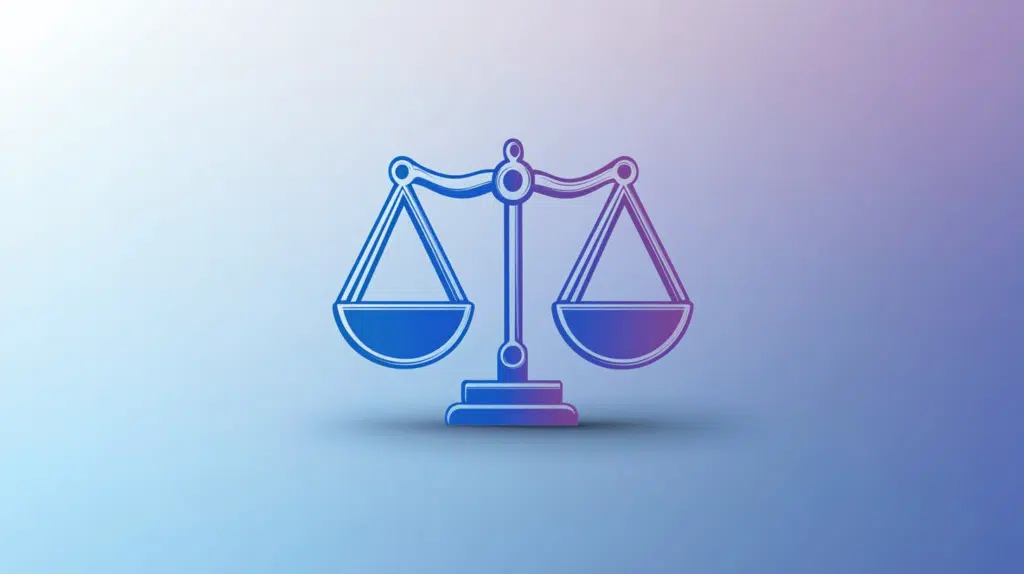Last Updated on August 12, 2024
Not sure which one to go with?
In this guide, let’s talk about Slack and Microsoft Teams, their key features, and how they stack up against each other.
Let’s get started.
Table of Contents:
Competition Complaint Against Microsoft
The two made the news earlier in 2020 when Slack filed a competition complaint against Microsoft.
The bulk of the report was about how Microsoft was “illegally tying” Teams to Office 365 (which is now Microsoft 365):
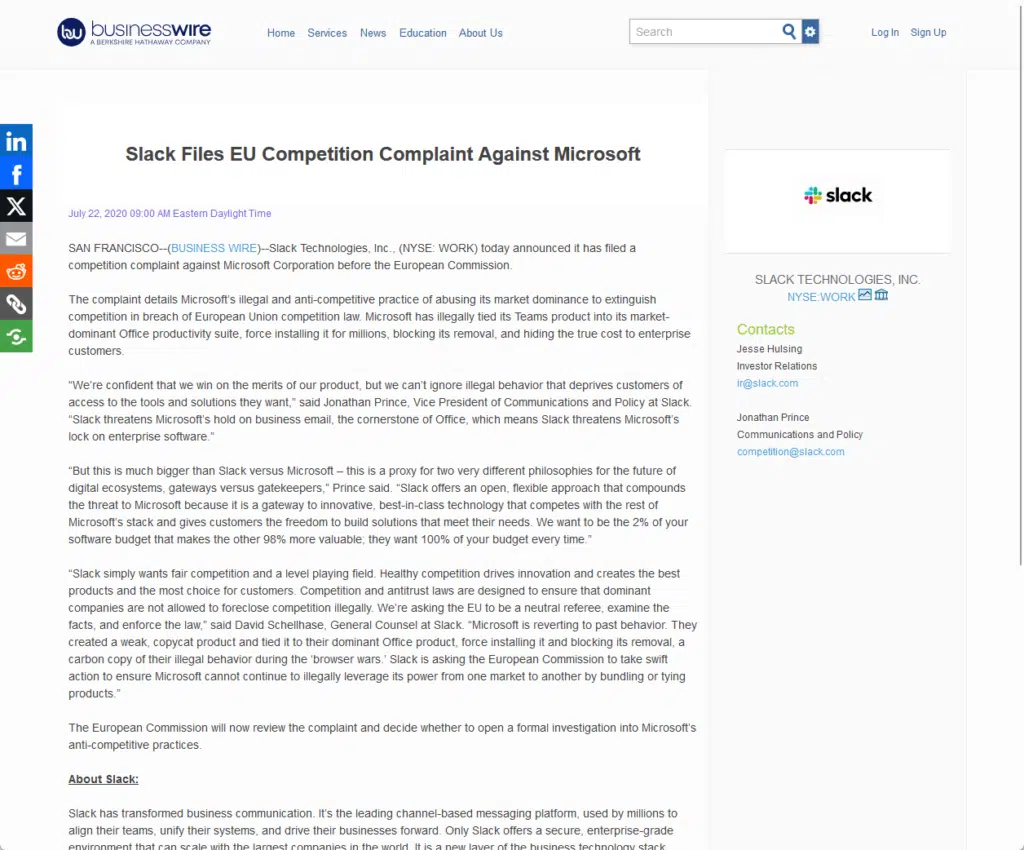
Their history runs deeper when a few years ago, Microsoft was thinking of buying the SaaS giant for about 8 billion USD.
But instead of going through, they decided instead to build their own team collaboration chat tool. 😅
Meanwhile, Slack was also busy buying out other competitors.
In 2018, Slack acquired Atlassian, which led to the discontinuation of Hipchat and Stride (and provided a migration option to Slack).
Sign up for exclusive updates, tips, and strategies
Microsoft Teams vs Slack: Overview
A few years ago, there was no need for Slack to get worried about the threat that is Microsoft Teams.
This new tool came out a bit late, giving Slack the time to cement itself as a standard in the collaboration space.
However, things got shaken up when Teams got past Slack in terms of daily active users, hitting 20 million in November of 2019.
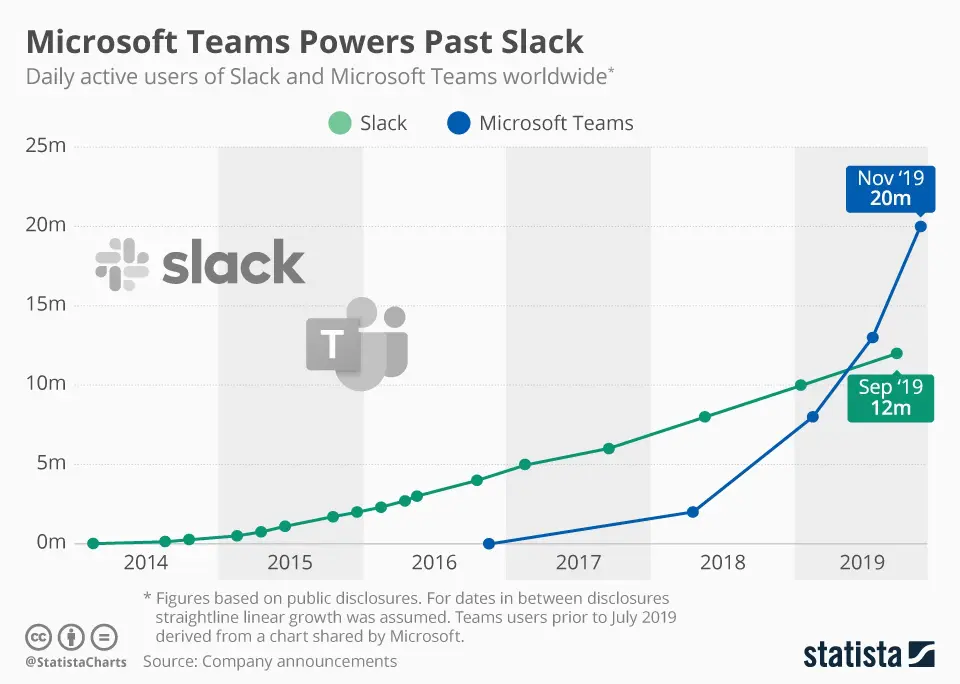
This number even grew to 75 million in the first half of 2020 — that alone is a clear threat to Slack’s dominance.
Naturally, that doesn’t mean that Slack is dead.
Microsoft Teams may be getting ahead of Slack in the battle for large enterprises and government institutions
That’s largely because of Microsoft’s expanding customer base (not to add, Teams is included in Windows installations).
Slack has no problem snagging most funded startups, making it (still) the king of startups:

Looking at the big picture, Microsoft Teams is designed for larger enterprise companies and organizations.
Its setup is somewhat more complex compared to Slack, which can be due to its integrations with Microsoft 365 apps.
Slack, on the other hand, is way easier to set up — and that must be one of the reasons why startups love it. 🙂
Microsoft Teams vs Slack: Key Features
Microsoft Teams and Slack both offer features to help you collaborate with your team and increase your productivity level.
But since they offer almost the same thing, many of their features overlap with each other.
For example, you will find on both platforms features like:
- Private and team messaging
- Video conference calls
- File sharing
- Screen sharing
Both also have a desktop app and another for mobile devices, and you can use Teams and even Slack’s web app anytime.
Let’s talk about the specific features you can expect from a chat and collaboration tool and how the two of them differ:
How the messaging features differ?
In terms of messaging, both tools provide a similar user interface and experience (both offer unlimited messages).
The first one is the advanced formatting options in Microsoft Teams.
Naturally, you can find the usual options like bold, italic, lists, etc, as well as some advanced ones like:
- Changing the color font
- Changing the font size
- Inserting a heading (or a quote or a table)
But to see all the options, you must expand the compose box first:
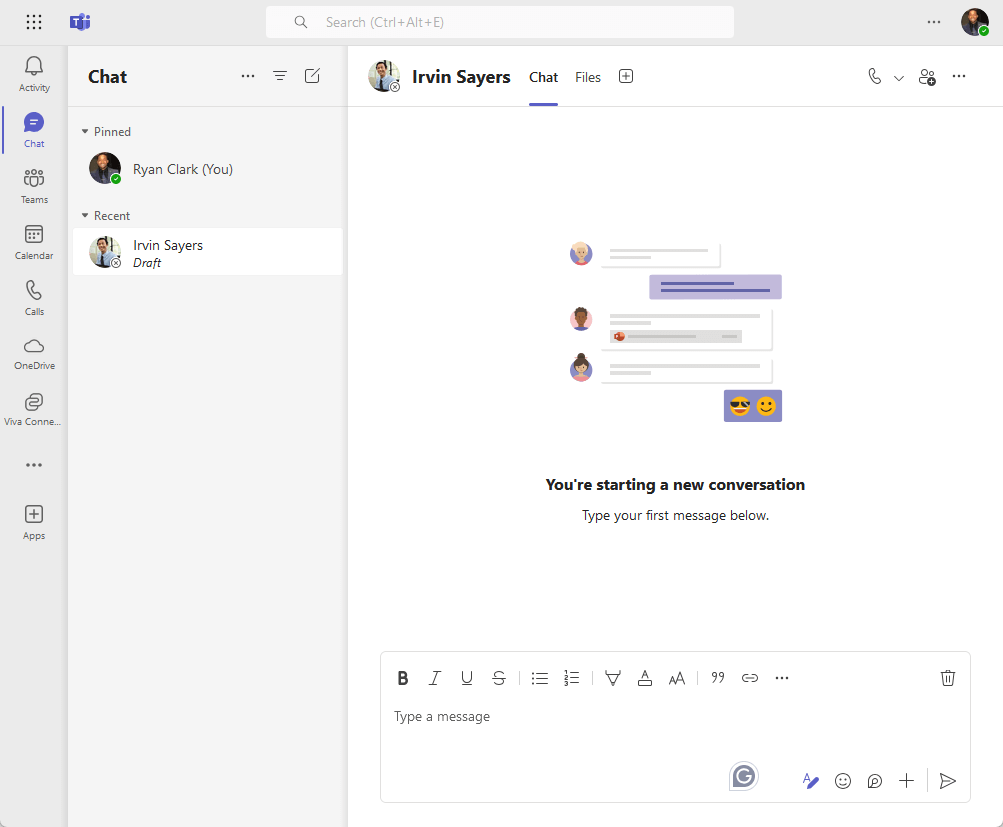
Slack allows some extra formatting as well, like lists and quotes, but not as sophisticated as Microsoft Teams.
It’s easy to add a GIF in Teams.
There’s a button in the compose box that will let you insert GIFs and stickers (kind of similar to how it works on Facebook).
Slack also now has an emoji-GIF button (or you can use the quick command for it):
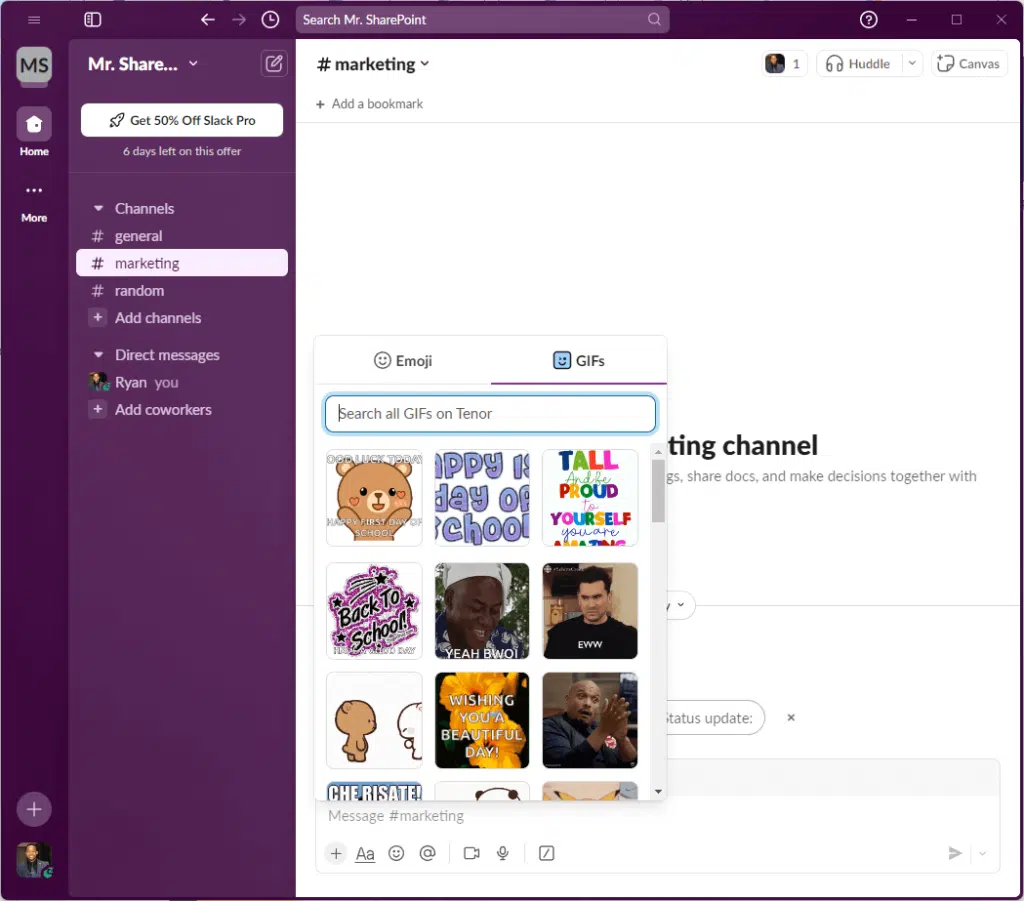
In the past, only Slack allows for custom reactions to Slack messages, which now Microsoft Teams also adapts. 🙂
How about voice or video chat?
Microsoft Teams and Slack offer voice and video calls.
However, if you’re on Slack’s free plan, you may not enjoy it that much since you can only voice or video call one person at a time.
If you want to hold a voice or video conference with your team (now called a huddle), you need to upgrade to a paid plan.

With Teams, it’s a different story.
With the free version, you can group call with 100 people, including external users (higher plans allow more people).
The limit here (for the free plan) is that the meeting can only last up to 60 minutes:

Since Microsoft is also behind the success of Skype, you will certainly feel Skype’s vibe in Teams.
There are also advanced features in Teams that are not in Slack yet like:
- Background blur
- Recording meetings
- Scheduling meetings (natively)
Slack though isn’t slacking here as they allow automatic captions and video background. 🙂
👉 Related: Skype for Business vs Teams: Only One Remains
Differences in their collaboration capabilities?
Microsoft Teams and Slack both offer a wide range of collaboration features:
- Both allow file sharing in their free plans
- Both have video and screen-sharing capabilities
In the past, Slack was a little restrictive with its screen sharing by not allowing free users to use it.
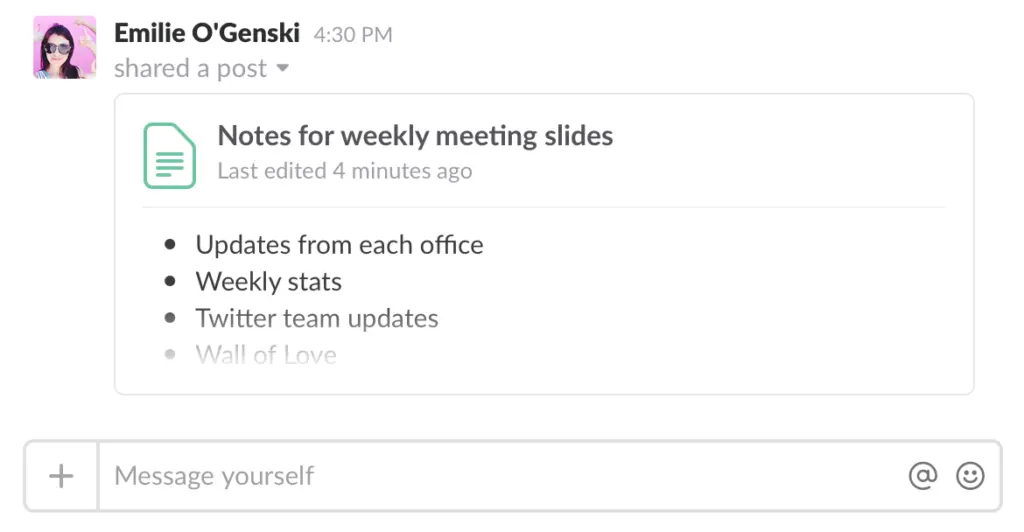
When uploading a file, Slack has a size limit of 1 GB while it can go as high as 250 GB with Microsoft Teams.
You can view (and edit) the document or play the video straight away on Teams without having to download the file.
For example, I just uploaded this video and then viewed this right inside Teams:
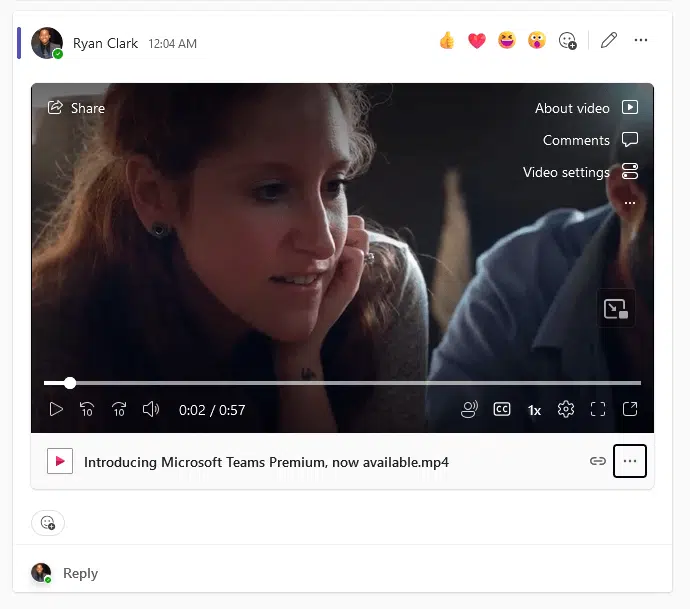
In terms of storage limits, Slack comes with 5 GB of storage per user in the free plan.
You can extend the limit to 10 (pro) and 20 GB (business) per user by upgrading the plan (enterprise has 1 TB per user).
With Teams, you get 5 GB of cloud storage per user for the free plan and up to 1 TB per organization for a paid plan.
⛔ Warning: Unfortunately, you won’t find a lot of information about Slack’s storage limits on their pricing and features page.
How about integrations?
Integration with apps is important since it allows you to use the apps without having to open them separately.
This makes it perfect to work productivity without disrupting the workflow as well as avoiding potential distractions.
As of the moment, Slack is the clear winner.
There are more than 2,600 apps that Slack integrates with including Microsoft Outlook and OneDrive.
Unfortunately, you need a paid plan to enjoy all integrations since the free plan only allows up to ten integrations. 😅
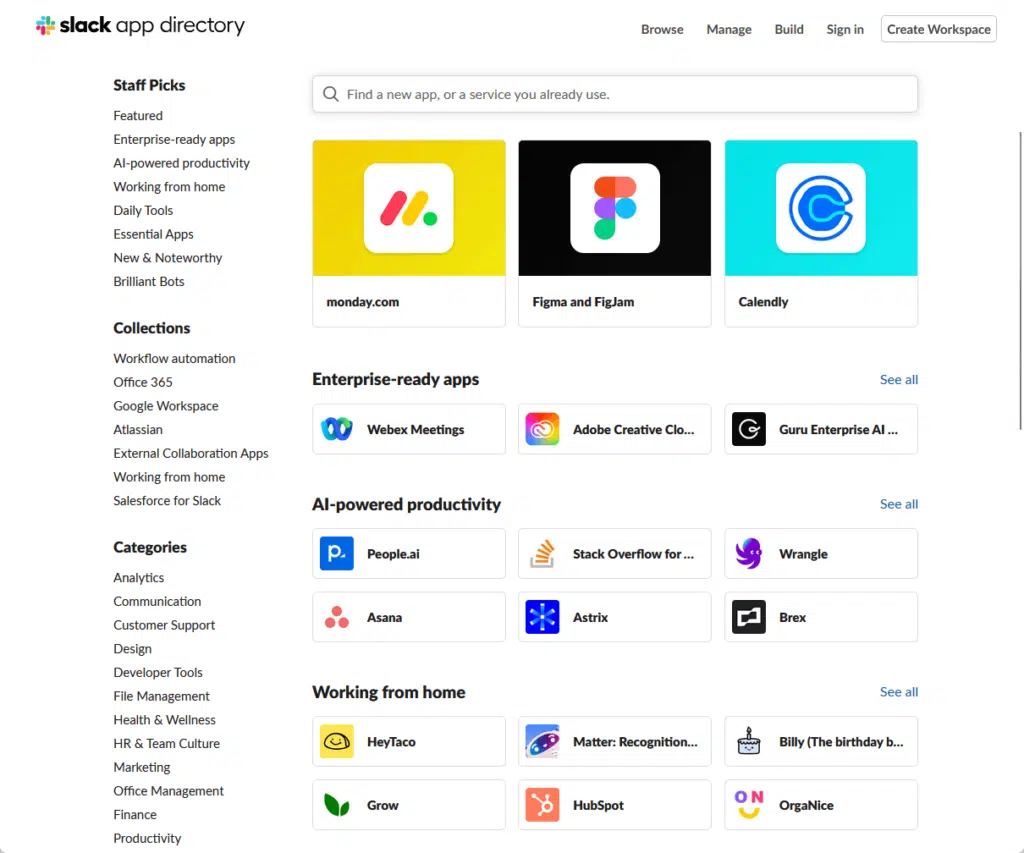
On the other hand, Teams offer unlimited integrations — though there are fewer Microsoft apps available (still 2,000+).
But Teams works perfectly with any of the Microsoft 365 apps to the point of being able to work on a document within Teams.
Like this:
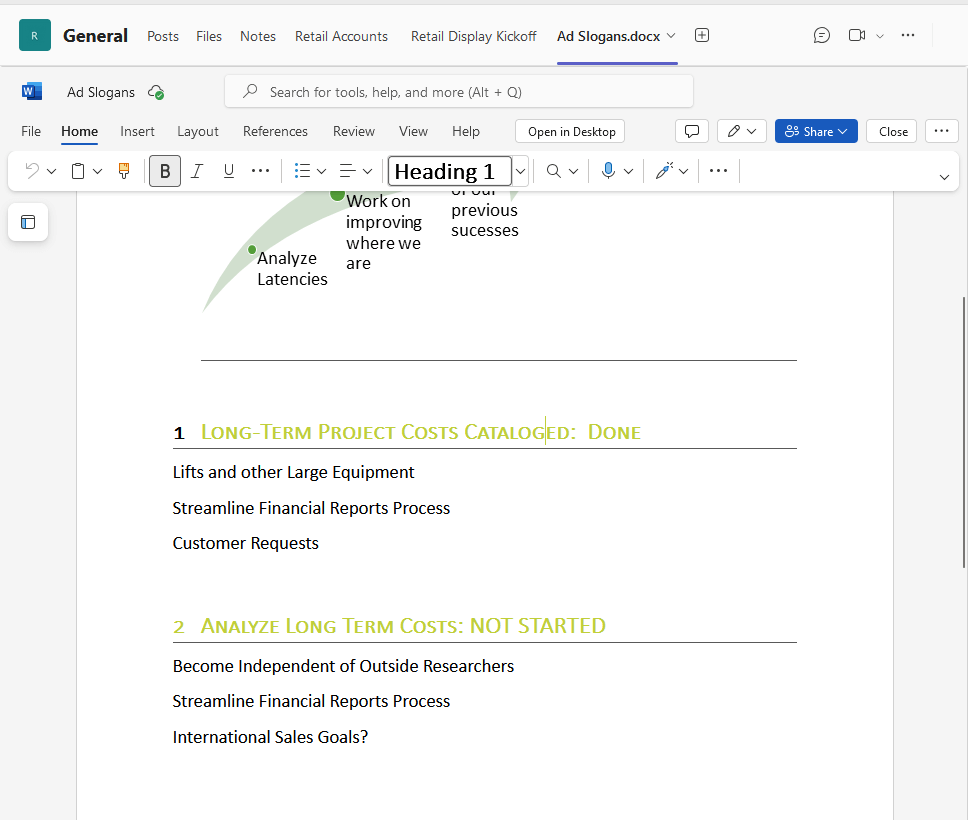
⚠️ Note: The update today is that when you click on a document, it will open on a separate tab automatically.
But if you want to work on a document right inside Teams, you can add it as a tab so your entire team can work on it there.
Microsoft Teams vs Slack: Security and Compliance
In terms of security and compliance, both tools are doing pretty well.
For one, Microsoft Teams and Slack both have:
- Data encryption
- Compliance certification like ISO/IEC 27001
- Two-factor authentication features
Both are pretty good here. 🙂
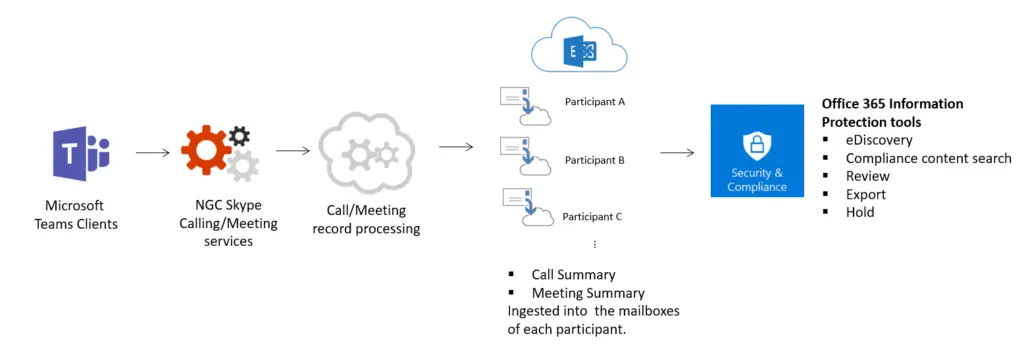
⚠️ Note: The ability to enforce it comprehensively requires a paid plan that includes Microsoft Entra ID Premium features.
Although they have an equal standing right now, Teams was really ahead of Slack in the past.
But Slack has been catching up in the past few years, which is why it’s now compliant with the most basic ISO certifications.
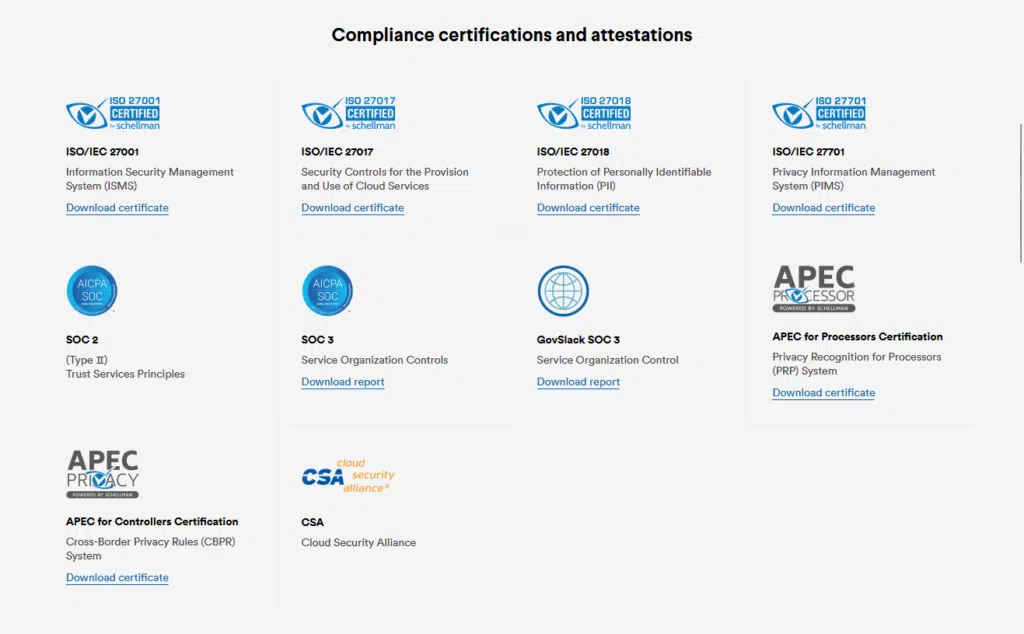
In addition, you can request specific workspaces to be HIPAA-compliant (only available for enterprise plans).
On the other hand, Microsoft Teams has better administrative controls — though is available only with paid plans.
Teams also has better access control and information management, with additional options for IT managers.
This doesn’t mean Slack has bad administrative tools (they’re great) — they’re just reserved for the higher-paid plans.
👉 Related: Microsoft Teams Security Best Practices: Compliance & Governance
Microsoft Teams vs Slack: Pricing Models
As for pricing, Microsoft Teams and Slack offer free plans.
However, the offering for free widely varies, with Slack being a bit restrictive (still generous though).
This is the current pricing for Slack:

The 50% off promo isn’t permanent though, so keep that in mind if you plan on getting a pro plan with Slack.
Microsoft Teams has two types of plans now:
- Business
- Home
The home plans include the free plan, with Microsoft 365 Family as the highest tier:
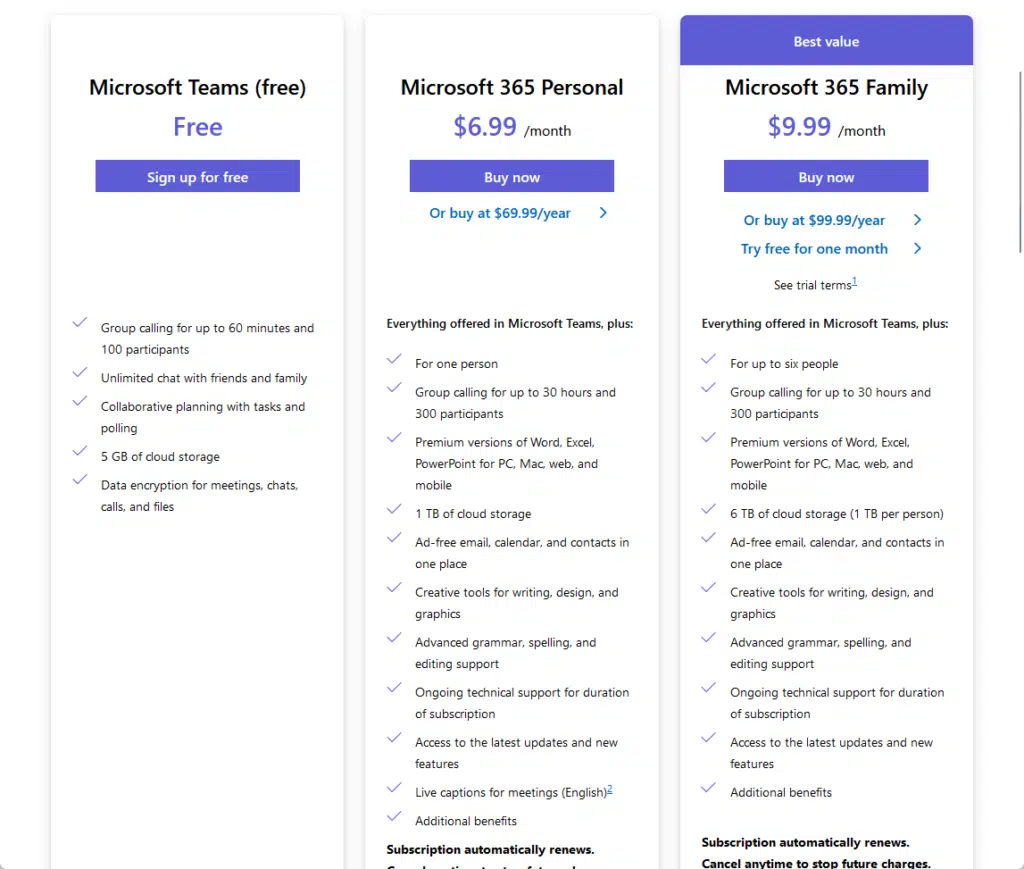
Then the business plans are all paid plans, starting with the essentials plan that only includes Microsoft Teams.
The rest are the Microsoft 365 business plans:
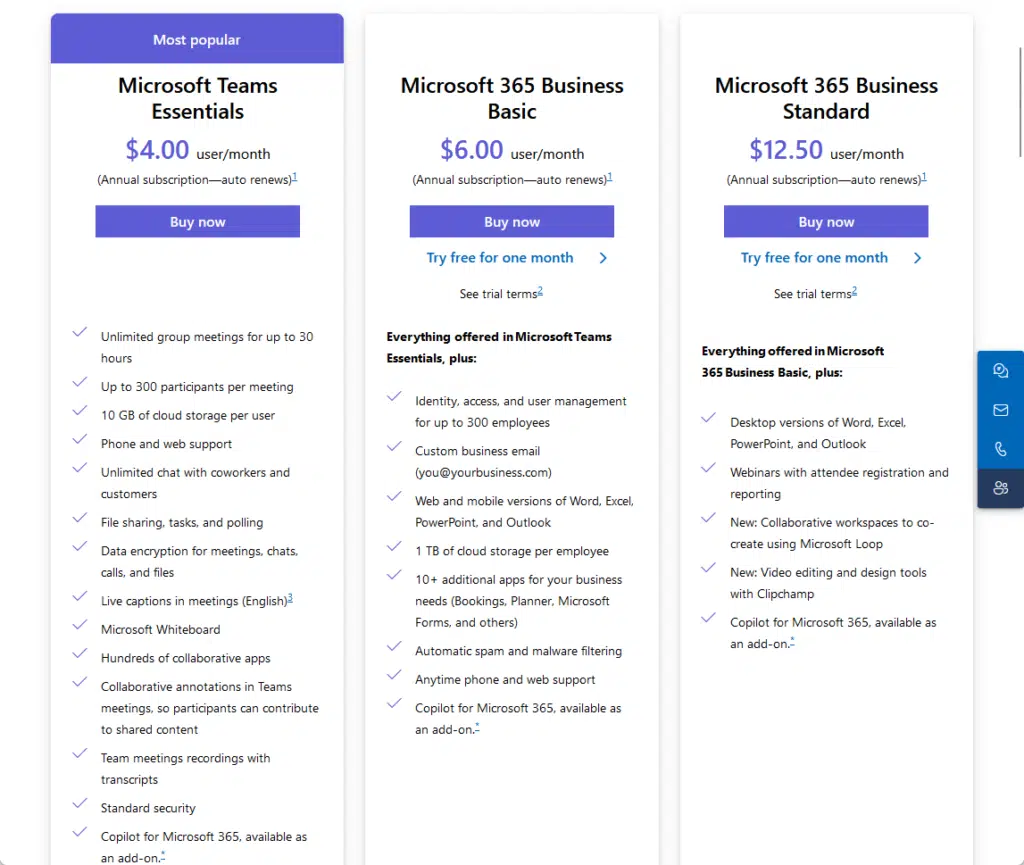
If you want to test them out, you can start with their free plan to test the waters and see which features you like more.
But like what I usually recommend, if your ecosystem is with Microsoft, then why not stick to it and make stuff easier? 🙂
Which app wins?
Well, I hate to break it to you, but I have to use the “depends on your needs” card — but hear me out for a bit.
As you can see, Microsoft Teams is more suited for large organizations and businesses.
They’re basically designed to go with Microsoft 365 and discourage users from looking further for any collaboration tools.
On the other hand, if you’re using another ecosystem, Slack is probably the best option.
Slack has integration with almost any productivity app (including some Microsoft 365 services and Google Suite).
But remember, Microsoft Teams isn’t a standalone product — it’s part of a larger ecosystem which is Microsoft 365.
This is why going for a paid plan of Teams is certainly more beneficial in terms of value for your money. 🙂
Anyway, got any questions about Microsoft Teams vs Slack? Let me know in the comments.
For any business-related queries or concerns, contact me through the contact form. I always reply. 🙂

